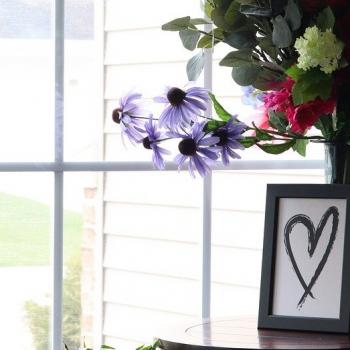It has been all too rare lately that I have been reminded of just how much of a recluse I am at heart. I love being alone.
I remember having a conversation years ago with my friend Patia about this and she told me, “your an introvert.” Her theory, which I think is correct, was that if you get energy more from being around people, then you’re an extrovert. If you get energy more from your alone time, you’re an introvert.
Of course introverts love being around people at times, and extroverts love being alone sometimes too – but you have to think about ‘on average, where and when do I get most of my energy?’ For me it’s definitely in extended periods of silence.
This week, and for two more, I have been house-sitting for a friend in what might be described as a modest prairie-style bungalow: 2 bedroom, 1 bath with attic room and full basement. It’s cozy, spacious for one person and comfortable for two (I lived here briefly as a renter in ’05). The space and silence has been incredibly welcome.
It is almost like being on retreat. It reminds me a bit of the time I spent at the Bhavana Society last year. In your space you are in your space. And outside of that, sure there are other people, but it is as if you have a social contract: each is aware of the other, but each is still in his/her space. Everyone is there, doing work inside, a sort of team-effort for the silent, introspective alleviation of suffering. We are all there, together, working individually on our own minds.
As I am not actually on retreat it remains to be said what work I am really doing. As I look back over past years of my blog, and think back further still, I know that both my meditative and academic work was at its best when I had similar periods of quiet.
The work I should be doing is my thesis: “Buddhist and Kantian Ethics, a Comparative Approach.” What have I done?… I almost submitted a proposal for an upcoming conference on Sustainability (ties in mostly with my work), I actually submitted a proposal for next year’s American Academy of Religion conference (which I’m highly enthusiastic about), and…. not much more.
Oh, some Pali work, taking steps toward memorizing the Metta Sutta, first in English, then in Pali. I suggested that Matt, my fellow Pali-fairer, and I plan to teach a class (informally) on Pali and metta (loving-kindness) in June. That should push us both a bit to be more motivated, though I’ve been very grateful for his motivation to keep us going for the last month or so as it is. If you want to learn Pali, which I think will incredibly deepen anyone’s Buddhist practice, I highly recommend going to this page and downloading everything, but mainly focusing on the Elementary Pali Course.
Well, I think that’s enough for now. I will leave you with a lovely Japanese painting and Buddhist story:

This illustrates the famous “Blind Men and the Elephant” parable, which can be found in various cultures, including Buddhism. In the Buddhist version, in the Udana, the Buddha recounts the story of a king who sends several blind men to examine an elephant. Afterward, the king asked them what they have found (edited):
“The one who was shown the head replied, ‘The elephant is just like a water jar.’
“The one was shown the ear replied, ‘it is just like a winnowing basket.’
“The one was shown the tusk replied, ‘it is just like an iron rod.’
“The one was shown the trunk replied, ‘it is just like the pole of a plow.’
“The one was shown the body replied, ‘it is just like a granary.’
And so on….
“Saying, ‘The elephant is like this, it’s not like that. The elephant’s not like that, it’s like this,’ they struck one another with their fists. That gratified the king.
“In the same way, monks, the wanderers of other sects are blind and eyeless. They don’t know what is beneficial and what is harmful. They don’t know what is the Dhamma and what is non-Dhamma. Not knowing what is beneficial and what is harmful, not knowing what is Dhamma and what is non-Dhamma, they live arguing, quarreling, and disputing, wounding one another with weapons of the mouth, saying, ‘The Dhamma is like this, it’s not like that. The Dhamma’s not like that, it’s like this.'”
Then, on realizing the significance of that, the Blessed One on that occasion exclaimed:
Some of these so-called
priests & contemplatives
are attached.
They quarrel & fight —
people seeing one side.
And so we are, even us Buddhists, merely seeing one side.











